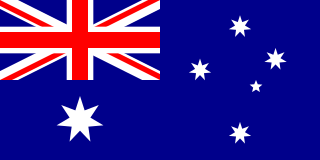Speed skating at the 1964 Winter Olympics, was held from 30 January to 7 February. Eight events were contested at the Eisschnelllaufbahn Innsbruck.

Alpine skiing at the 1964 Winter Olympics consisted of six events, held near Innsbruck, Austria, from January 30 to February 8, 1964.

Australia competed at the 1964 Winter Olympics in Innsbruck, Austria. Six athletes were sent, and Australia competed only in Alpine skiing. Australia's best result was Christine Smith's 27th place in downhill.

Australia competed at the 1976 Winter Olympics in Innsbruck, Austria. Colin Coates' sixth place in 10000 metres speed skating was Australia's best result so far at the Winter Olympics.
Biathlon at the 1964 Winter Olympics consisted of one biathlon event, held at Seefeld. The events began on 9 February and ended on 11 February 1964.
Luge at the 1964 Winter Olympics consisted of three events at Olympic Sliding Centre Innsbruck. The competition took place between 30 January and 4 February 1964.
Nordic combined at the 1964 Winter Olympics consisted of one event, held 2–3 February at Seefeld in Tirol.
Ski jumping at the 1964 Winter Olympics consisted of two events held from 31 January to 9 February, with the large hill event taking place at Bergiselschanze, and the normal hill event at Seefeld. For the first time at the olympics, more than one ski jumping event was contested, with the addition of a large hill competition.
The Men's giant slalom competition of the Innsbruck 1964 Olympics was held on 2 February at Axamer Lizum.
The Women's giant slalom competition of the Innsbruck 1964 Olympics was held at Axamer Lizum.
The Women's slalom competition of the Innsbruck 1964 Olympics was held at Axamer Lizum, Austria.
The men's singles luge competition at the 1964 Winter Olympics in Innsbruck was held from 30 January to 4 February, at Olympic Sliding Centre Innsbruck. Tragedy affected the event as British luger Kazimierz Kay-Skrzypecki was killed during a practice run on January 23, seven days before the start of the competition.
The Women's singles luge competition at the 1964 Winter Olympics in Innsbruck was held from 30 January to 4 February, at Olympic Sliding Centre Innsbruck.
The Doubles luge competition at the 1964 Winter Olympics in Innsbruck was held on 5 February, at Olympic Sliding Centre Innsbruck.

The men's normal hill individual ski jumping competition for the 1964 Winter Olympics was held at Seefeld. It occurred on 31 January.

The men's large hill individual ski jumping competition for the 1964 Winter Olympics was held in Bergiselschanze. It occurred on 9 February.
The men's 500 metres in speed skating at the 1964 Winter Olympics took place on 4 February, at the Eisschnelllaufbahn Innsbruck.
The men's 10,000 metres in speed skating at the 1964 Winter Olympics took place on 7 February, at the Eisschnellaufbahn.
Two-man bobsleigh at the 1964 Winter Olympics took place on 31 January and 1 February at Bob und Rodelbahn Igls, Innsbruck, Austria. This event was last run at the 1956 Winter Olympics as bobsleigh was not part of the 1960 games.
Four-man bobsleigh at the 1964 Winter Olympics took place on 5 and 7 February at Bob und Rodelbahn Igls, Innsbruck, Austria. This event was last run at the 1956 Winter Olympics, as bobsleigh was not part of the 1960 games.



